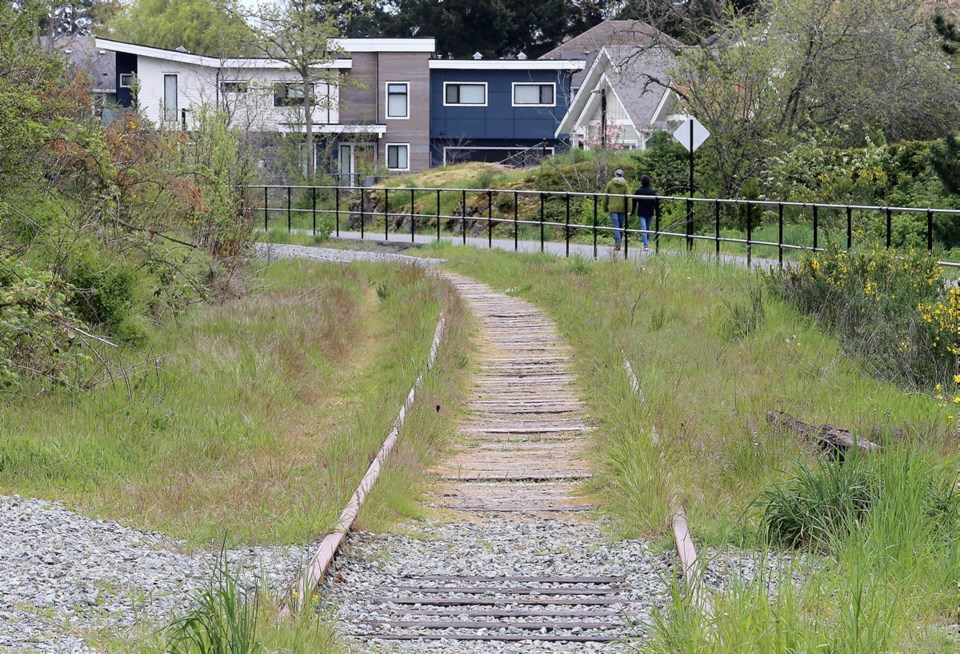A new passenger and freight rail line would have the potential to stimulate economic growth in communities on Vancouver Island, says the chairman of the Cowichan Valley Regional District.
“When you bring something like a rail corridor back to life and people can see that it is long term and that the investment is long term, you spur all kinds of economic growth around that corridor as well,” Ladysmith Mayor Aaron Stone said Friday. “The biggest challenge is to ensure that we never lose that corridor.”
A new consultant’s report prepared for the province sets out three levels of service, based on upgrading the Island Rail Corridor. Estimated costs range from $326 million to $729 million for freight and passenger service between Victoria and Courtenay and for a leg that runs to Port Alberni. A commuter service between Langford and Victoria has an estimated price tag of $595 million.
Proponents say those costs could be shaved and the system could be rolled out over many years rather than spending that much money at once.
Others fear there is not enough demand to make it economically viable and taxpayer money would be wasted on an expensive system.
The old E and N rail line was last used to carry passengers in 2011. It ended due to concerns about the condition of the tracks.
Stone said now that the baseline report on the condition of the system has been completed, it’s time to do a business-case analysis of the future of transportation in coming decades.
It could look at everything from migration patterns to Vancouver Island to the potential for savings in infrastructure-maintenance costs from moving freight off trucks and onto rail.
Within the Cowichan Valley Regional District, Stone sees opportunities for housing development as well as a stronger inter-regional economy based on the ability to move goods and services and serve manufacturing operations.
Stone and Nanaimo Mayor Leonard Krog see potential for rail to carry cargo coming in and out of Port Alberni’s deep-sea port, with the line linked to Nanaimo. From there, goods could be shipped to and from the mainland.
Krog is optimistic about the value and future of rail on Vancouver Island.
While the cost is daunting, “you don’t have to build it in a day or a year,” he said — rebuilding the system and getting it up and running in segments is a more logical approach.
“We have just found billions and billions of dollars to support people through a tough time. We can find a few hundred million to ensure that we have the rail.”
A key advantage is that the corridor exists in the first place, he said. “It is an absolutely horrendous undertaking to create a rail system through a populated area. We have it in place — it is irreplaceable,” Krog said.
“You’re not going to do this again.”
Krog favours a multi-use plan for the corridor. Depending on the width available along the route, a rail system could be installed with space allocated for other uses alongside. That could include cyclists and walkers, who already use the corridor regularly.
Parksville Mayor Ed Mayne said some kind of commuter-rail system is needed between Langford and Victoria, but that’s all. He’s not in favour of a rail system to Courtenay, saying there is not enough demand, including freight, to justify the cost.
“There’s no way that it can be economically sustainable, Mayne said. “It’s a romantic idea that people just won’t let go of.”
The future of the corridor has been discussed for many years and nothing has changed, he said.
“That bothers me. We haven’t advanced an inch on this, other than we know that it is way too expensive,” he said.
Courtenay Mayor Bob Wells hasn’t read the new report, but said any benefit from reintroducing rail service to the Comox Valley would likely be through the tourism sector.
“In my mind, there are different business cases for different parts of the Island.”



